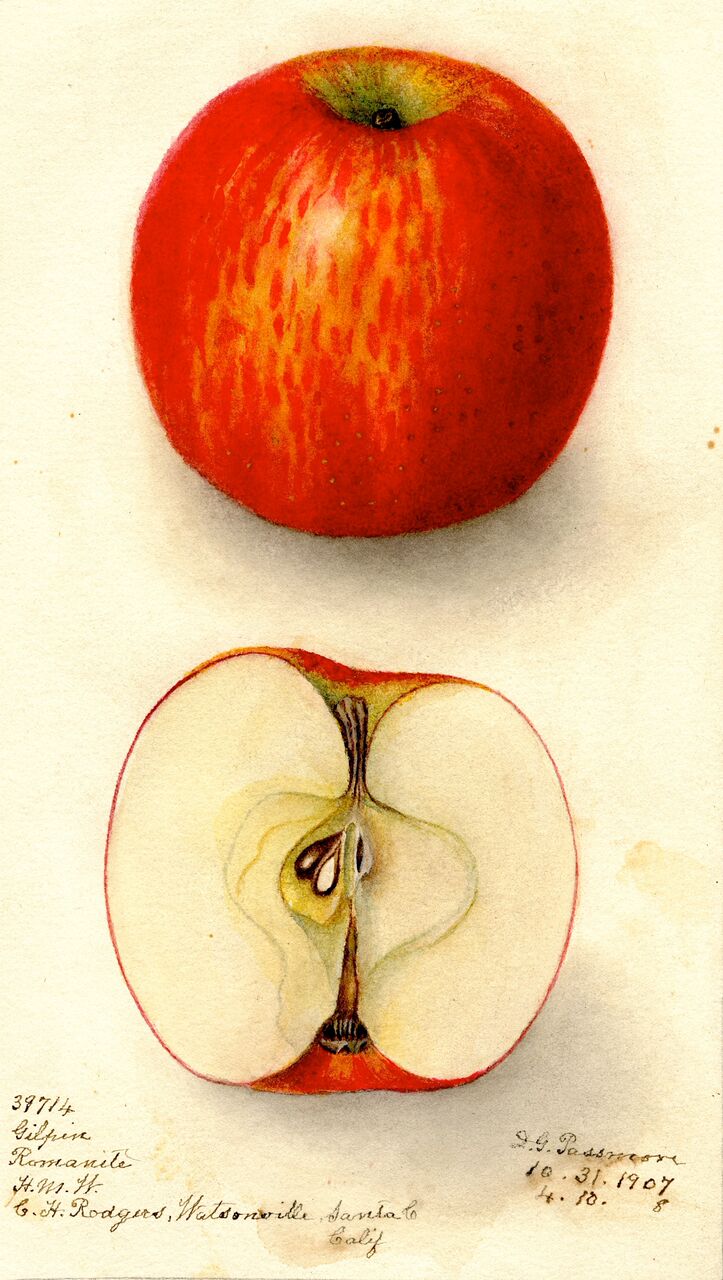 GILPIN
GILPIN
Sometimes a commercial apple was not a splendid fruit. Nurserymen and brokers had an acute sense of those varieties that in absolute terms did not measure up to the standard of excellence, yet possessed enough marketable qualities to bring in money. The Gilpin Apple exemplified this sort of “market apple.” Consider this assessment by an Illinois horticulturist in 1868. “The Gilpin apple . . . is but a poor fruit: but it so good a bearer and so late a keeper, and withal has so tempting an appearance from its bright red color, that—as the phrase goes, ‘there is money in it.” The critic did not even mention the apple’s greatest recommendation—its ability to repel apple worms. [“Concerning Smart Bugs,” The American Entomologist 1 (1868), 160.]
The Gilpin’s reputation as a so-so eating apple did not forestall its employments for other purposes. It became a bulk cider apple. When one needed a kept apple in Spring, the Gilpin would be mellow into May. Hence in the balloting of Midwestern and Ozark agricultural societies, Gilpin topped the lists as the most profitable apple, beating out the Winesap.
It did not enjoy so avid a following in its native Virginia. First noticed by William Coxe in the 1810s, he proved more enthusiastic about its table qualities than subsequent tasters: “It is highly esteemed for its excellence as a table apple, late in the spring, and as a good cider fruit. It is a most abundant bearer, and hangs on the tree very late in the season. The tree is hardy; of a handsome, open, spreading, and vigorous growth: the fruit is small; the colour a deep red, and sometimes a little streaked with yellow; the skin of a polished smoothness; the form inclining to oblong. The flesh is very firm yellow, and rich; not fit for eating until –mid-winter, when it becomes juicy, tender, and fine flavoured” [quoted in James Thacher, The American Orchardist (1825), 127].
Image: U.S. Department of Agriculture Pomological Watercolor Collection. Rare and Special Collections, National Agricultural Library, Beltsville, MD 20705,Deborah Passman, 1907/08.
David S. Shields